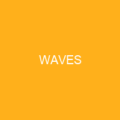The Sea: A Vast and Wondrous Ocean
Imagine a vast expanse stretching as far as the eye can see, teeming with life and mystery. The sea is more than just water; it’s a dynamic ecosystem that covers over 71% of our planet’s surface. It’s a place where ancient secrets lie hidden beneath its waves, and where modern wonders are discovered every day. But what exactly makes this body of saltwater so fascinating? Let’s dive into the depths to uncover some of its mysteries.
The Sea: A Vital Element for Life
From the Caspian Sea’s status as a ‘sea’ in question due to its saline composition, to the vastness of Earth’s liquid seas covering 71% of its surface, the sea plays an integral role in our lives. It provides us with food, trade routes, and travel opportunities, but it also faces significant challenges like marine pollution and climate change.
Hydrology and Hydrodynamics
The study of hydrology delves into Earth’s water cycle, while hydrodynamics explores the physics of moving water. These fields help us understand how seawater circulates globally, influenced by factors such as evaporation, precipitation, ice formation, and runoff.
Seawater Composition
Seawater has a salinity of around 35‰, with salts including sodium, chloride, magnesium, calcium, sulphate, carbonate, and bromide. Its temperature varies from near-freezing in polar regions to over 30°C (86°F) in tropical areas. The continuous circulation of water in the oceans plays a crucial role in moderating Earth’s climate.
The Sea: A Dynamic Ecosystem
From the freezing temperatures at the poles to the warm waters near the equator, the sea is home to diverse ecosystems and organisms that play vital roles in our planet’s health. Let’s explore some of these fascinating aspects:
Tsunamis: Nature’s Unusual Waves
A tsunami can be a terrifying force of nature, caused by powerful events like underwater earthquakes or landslides. These waves travel at incredible speeds and can cause extensive damage when they reach the shore.
Surface Currents and Gyres
Surface currents are formed by wind blowing over water, creating gyres that moderate Earth’s climate. Deep ocean currents, like the thermohaline circulation or global conveyor belt, flow through all world oceans due to differences in water density caused by salinity and temperature.
The Sea: A Source of Energy
As we face increasing energy demands, the sea offers a vast supply of renewable energy. From tidal power to wave power, these forms of sustainable marine energy can play a significant role in our future energy mix.
Marine Minerals and Resources
The seabed holds large deposits of petroleum and natural gas, seafloor massive sulphide deposits containing precious metals like silver, gold, copper, lead, zinc, and trace metals. Additionally, there are vast quantities of methane clathrate on the seabed and in ocean sediment.
Human Interaction with the Sea
Humans have a long history of interaction with the sea, from ancient civilizations to modern times. The sea has been an integral part of human culture, providing food, trade routes, and inspiration for art, music, literature, and more.
Maritime Trade and Exploration
From the Mesopotamians using bitumen to caulk their reed boats to the modern-day use of GPS for accurate navigation, humans have always found ways to harness the power of the sea. The development of steam power and dreadnought battleships significantly increased naval warfare capabilities during World War I and II.
The Sea: A Source of Energy
Renewable energy from the sea is a growing field, with various forms like tidal power, ocean thermal energy, and wave power. These sources offer hope for sustainable energy solutions in the future.
Marine Pollution and Conservation
The sea faces numerous environmental challenges, including marine pollution, overexploitation, and climate change. Industrial outflows, sewage, oil spills, and plastic waste are just a few of the issues that threaten our oceans’ health.

The sea is a vast, complex, and ever-changing entity that holds countless mysteries. From the depths of its waters to the surface currents that shape our climate, it plays an indispensable role in our lives. As we continue to explore and understand this magnificent body of water, let us also strive to protect it for future generations.
You want to know more about Sea?
This page is based on the article Sea published in Wikipedia (retrieved on January 27, 2025) and was automatically summarized using artificial intelligence.





